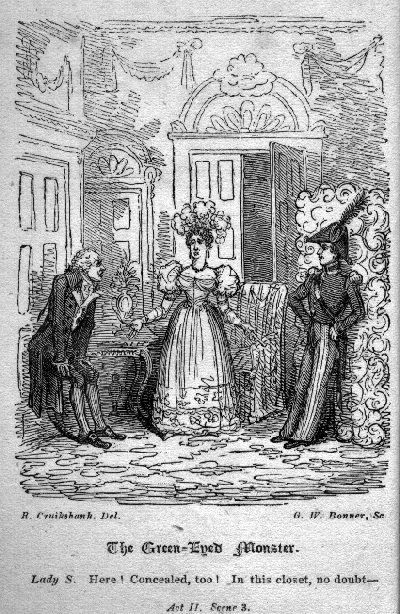Page 7 of 7 pages
Previous Page
Return to Beginning
(Interview with Jack Wolcott, continued)
-
L.C.: This must have created quite an awareness in the young scholars of the interconnectivity of theatrical life in the 19th century.
JRW: Indeed it did. No one was researching in a vacuum. Everything resonated to everything else in the project. And this was quite a departure from the usual way of doing research in the United States, where competition is rampant and scholars tend to keep information to themselves until it is published. Not every student was able to overcome this desire for secrecy entirely, I'm afraid, but in general the spirit was one of sharing and cooperation.
L.C.: Did all the students tend to research in much the same way?
JRW: Not at all. Irina Rudakova, a brilliant and tireless young Russian scholar, attacked the question of what plays were performed at the City of London Theatre by creating a massive table, listing all the plays known to have been performed at the theatre between 1837 and 1848 and linking these entries to annotations in the database. Her partner, C.B. Davis, produced essays that placed several writers and performers into the fabric of production at the theatre. Of course, he also contributed greatly to the day-list of plays.
How the material was approached and what was accomplished often had to do with the material itself. Shinya Inoue, a Japanese scholar, posed what turned out to be a null hypothesis, for example: that aspects of money, commerce and labor would be reflected in the plays of the period. In fact, his research led to the interesting conclusion that these were topics which seldom found their way into British popular plays. Katie Johnson and her partner Terry Smith, on the other hand, theorized that the stirrings of what a century later would become known as "women's liberation" might be found in British drama of the second half of the 19th century, and were richly rewarded in their research.
L.C.: So in this study of the 19th century theatre in England, computing played a minor role?
JRW: It played a different role than it had in The Philadelphia Project. It enabled us to develop a huge database, and to extract sets of data that would otherwise have taken weeks to extract manually. And in 1996, we added a dimension to the study that could only have been accomplished with the computer.
|
As we examined the hundreds of plays in the collection, we found over 350 woodcuts and engravings, many by noted 19th century artists. The texts were extremely fragile, in some cases nearly one hundred fifty years old, and printed on cheap low-grade paper. Still, with the blessings of the Library, we scanned each image electronically, to preserve and to be able to work with them without further stress to the source materials. Each woodcut and engraving was analyzed, and the information entered into a database. It was now possible to ask, for example, to see all the engravings which showed a scene of landscape, with the sea in the distance; or an interior scene with three women and two men; or to see all the engravings executed by a specific artist. The database would find these, and they could be displayed on the computer monitor.
The research engendered by the text database and image library was fascinating. Here again, the medium of communication was the website. Graduate student researchers developed additions to The 19th Century London Stage which included "Artists and Engravers," "Representations of Theatre Interiors," "Women in 19th Century Drama and Engravings;" "Representation of Landscapes in Theatrical Engravings," "Punch and the 19th Century London Stage"and "Representations of India and Indian Culture." As it progressed, this new research was incorporated by me and Dr. Joan Robertson, an information scientist working in the University of Washington division of Health Sciences into The 19th Century London Stage. Dr. Robertson left the University in 1997 and I retired the following year, bringing all of this work to a halt. L.C.: No one has continued with this research? JRW: So far as I know, no one at the University of Washington has expressed interest in this material since I retired. This doesn't surprised me: few expressed much interest in our projects while we were developing them. I suppose if I had expected otherwise I would be embittered by this, but I long ago discovered that the role of an academic discipline is to protect itself from change. Why should theatre historians be different from others? To my knowledge, nothing of our work has ever been reported in a theatre journal, although it is readily available in computer publications. The Florimène material, which I have made available for the asking to any who wish it, has been used throughout the world, and The 19th Century London Stage is linked to a great many sites on the WWW as a Victorian studies resource. Perhaps someday a scholar with an interest in the 19th century stage will come to the University of Washington and take up where we left off. Much of the "landscape" we discovered is yet to be explored.
|

|
